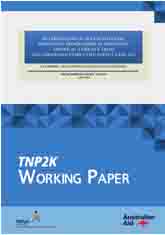AVAILABILITY AND QUALITY OF PUBLIC HEALTH FACILITIES IN EASTERN INDONESIA: RESULTS FROM THE INDONESIA FAMILY LIFE SURVEY EAST 2012
Little is known about public health-care supply in Eastern Indonesia, a region that shows worse health outcomes than the rest of the country. Drawing on a new dataset (IFLS East 2012), this paper examines the availability and quality of public health-care facilities (puskesmas and posyandu) in Eastern Indo- nesia.
Our findings suggest that public health-care supply plays a larger and more important role in Eastern Indonesia compared with Western Indonesia. However, this stronger reliance and dependence on public health-care provision has not necessarily resulted in quality health-care supply. Although significant improvements have been achieved over time, we found that many puskesmas and posyandu could benefit from more and better-trained staff (education, training, availability, absenteeism) and better physical endowment (infrastructure, medical equipment, and medications). The results further suggest that remarkable differences in the provision of health care exist between urban and rural areas; urban areas have on average better-equipped puskesmas, whereas rural areas seem to have better-equipped posyandu. Furthermore, we found that direct funds from the central level (central government funds and Jamkesmas), despite the decentralization process, play a major role in financing the operations of public health facilities. In rural Eastern Indonesia, these central-level funds constitute about 80 percent of the total operational budget of a puskesmas.
